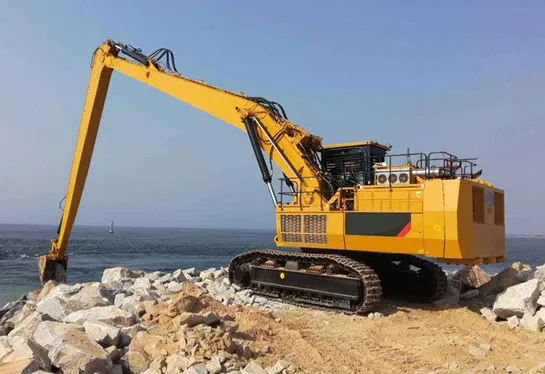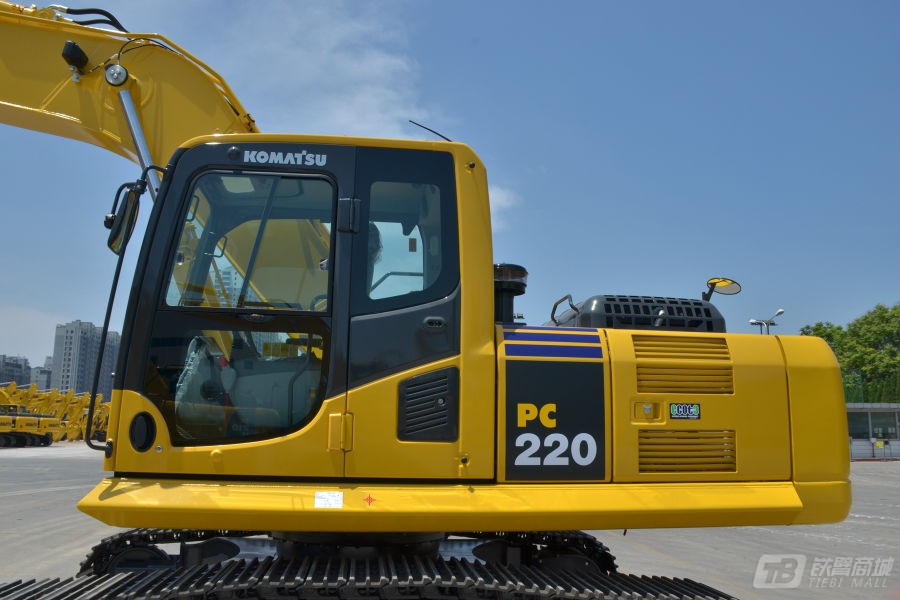
Why Won’t My Excavator Start? When your excavator refuses to start, it can be incredibly frustrating and can halt your work entirely. Understanding the possible causes and solutions can save you time, money, and stress. In this comprehensive guide, we’ll delve into the common reasons why an excavator might not start and provide actionable solutions to get you back up and running.
A dead or weak battery is one of the most common reasons an excavator won’t start. Over time, batteries lose their ability to hold a charge due to age, repeated use, or extreme weather conditions.
Corroded or loose battery terminals can prevent the battery from supplying power to the engine.
Sometimes the issue is as simple as not having enough fuel in the tank.
Contaminated fuel can cause blockages in the fuel system, preventing the engine from starting.
Faulty spark plugs can prevent the engine from igniting the fuel-air mixture.
Ignition coils are responsible for converting the battery’s voltage to the high voltage needed to create a spark in the spark plugs.
A faulty starter motor can prevent the engine from cranking.
Loose or damaged wiring can interrupt the flow of electrical current to the starter motor.
Why Won’t My Excavator Start?Low hydraulic fluid levels can cause the engine to struggle or fail to start.
A faulty hydraulic pump can affect the performance of the hydraulic system, preventing the engine from starting.
Blocked air filters can restrict airflow to the engine, preventing it from starting.
Issues with the intake manifold can also prevent the engine from receiving the proper air-fuel mixture.
Blown fuses can disrupt the electrical system, preventing the engine from starting.
Faulty relays can prevent power from reaching essential components.
When your excavator refuses to start, it can bring your entire operation to a halt. To prevent this frustrating scenario and ensure your machine operates smoothly, it’s crucial to adopt a robust preventive maintenance routine. Here are some comprehensive tips to help you maintain your excavator in top condition and avoid those dreaded starting problems.
Why Won’t My Excavator Start? One of the primary reasons is often overlooked maintenance. Conducting regular inspections is vital to identify and address potential issues before they become major problems. A thorough inspection routine includes checking the battery, fuel system, ignition system, starter motor, hydraulic system, air intake system, and electrical system for signs of wear or damage.
Regular inspections not only help you identify potential issues early but also ensure that your excavator remains in peak operating condition, reducing the likelihood of unexpected starting problems.
Why Won’t My Excavator Start? Another common reason is neglecting the manufacturer’s maintenance guidelines. Always adhere to the maintenance guidelines provided by the manufacturer. These guidelines are tailored to your specific excavator model and include essential information on regular servicing and the recommended parts and fluids to use.
By following the manufacturer’s guidelines, you can maintain your excavator’s performance, reliability, and safety, reducing the chances of encountering starting problems.
Why Won’t My Excavator Start? Keeping a maintenance log can help you answer this question by providing a detailed history of all maintenance activities. Maintain a log of all inspections, repairs, and parts replacements. This will help you keep track of when maintenance is due and identify recurring issues.
Keeping a maintenance log is an invaluable tool for proactive maintenance and troubleshooting, helping you avoid unexpected starting issues.
Why Won’t My Excavator Start? The answer might lie in the quality of the parts you are using. Always use high-quality parts and fluids that meet or exceed the manufacturer’s specifications. This will ensure the longevity and reliability of your excavator.
Investing in high-quality parts and fluids is a wise decision that pays off in the long run by enhancing the reliability and performance of your excavator.
Why Won’t My Excavator Start? Sometimes, operator error or lack of knowledge can be the cause. Ensure that all operators are properly trained in the correct operation and basic maintenance of the excavator. This will help prevent operator-induced issues and ensure that minor problems are identified and addressed promptly.
Investing in operator training is essential for maintaining the health and performance of your excavator, reducing the likelihood of starting issues due to operator error.
Why Won’t My Excavator Start? This question can have multiple answers, but with a proactive approach to maintenance, many starting issues can be prevented. Conducting regular inspections, following the manufacturer’s guidelines, keeping a maintenance log, using quality parts, and training operators are all crucial steps in maintaining your excavator’s reliability and performance.
By implementing these preventive maintenance tips, you can reduce the risk of unexpected starting problems, ensuring that your excavator remains in optimal working condition and ready to tackle any job. Remember, a well-maintained excavator is not only more reliable but also more efficient and safer to operate. Happy digging!

To assist in diagnosing and resolving starting issues, here is a simplified troubleshooting flowchart:
graph TD
A[Excavator Won't Start] --> B[Check Battery]
B --> C{Battery OK?}
C -->|Yes| D[Check Fuel System]
C -->|No| E[Charge or Replace Battery]
D --> F{Fuel OK?}
F -->|Yes| G[Check Ignition System]
F -->|No| H[Refuel or Replace Fuel]
G --> I{Ignition OK?}
I -->|Yes| J[Check Starter Motor]
I -->|No| K[Repair Ignition System]
J --> L{Starter Motor OK?}
L -->|Yes| M[Check Hydraulic System]
L -->|No| N[Repair or Replace Starter Motor]
M --> O{Hydraulic System OK?}
O -->|Yes| P[Check Air Intake System]
O -->|No| Q[Repair Hydraulic System]
P --> R{Air Intake OK?}
R -->|Yes| S[Check Electrical System]
R -->|No| T[Clean or Replace Filters]
S --> U{Electrical System OK?}
U -->|Yes| V[Seek Professional Help]
U -->|No| W[Repair Electrical System]Diagnosing and resolving starting issues with your excavator can be a detailed and sometimes complex process. However, by systematically checking each potential cause—from the battery and fuel system to the ignition and hydraulic systems—you can identify the problem and implement the appropriate solution.
Regular maintenance and inspections are key to preventing many of these issues from occurring in the first place. Ensuring that your excavator is well-maintained and using high-quality parts will help keep it running smoothly and efficiently.
If you find that you are unable to diagnose or fix the problem yourself, it’s always best to seek professional help. An experienced technician will have the tools and knowledge necessary to get your excavator back in working order.
Remember, a well-maintained excavator is not only more reliable but also more efficient and safer to operate. Happy digging!